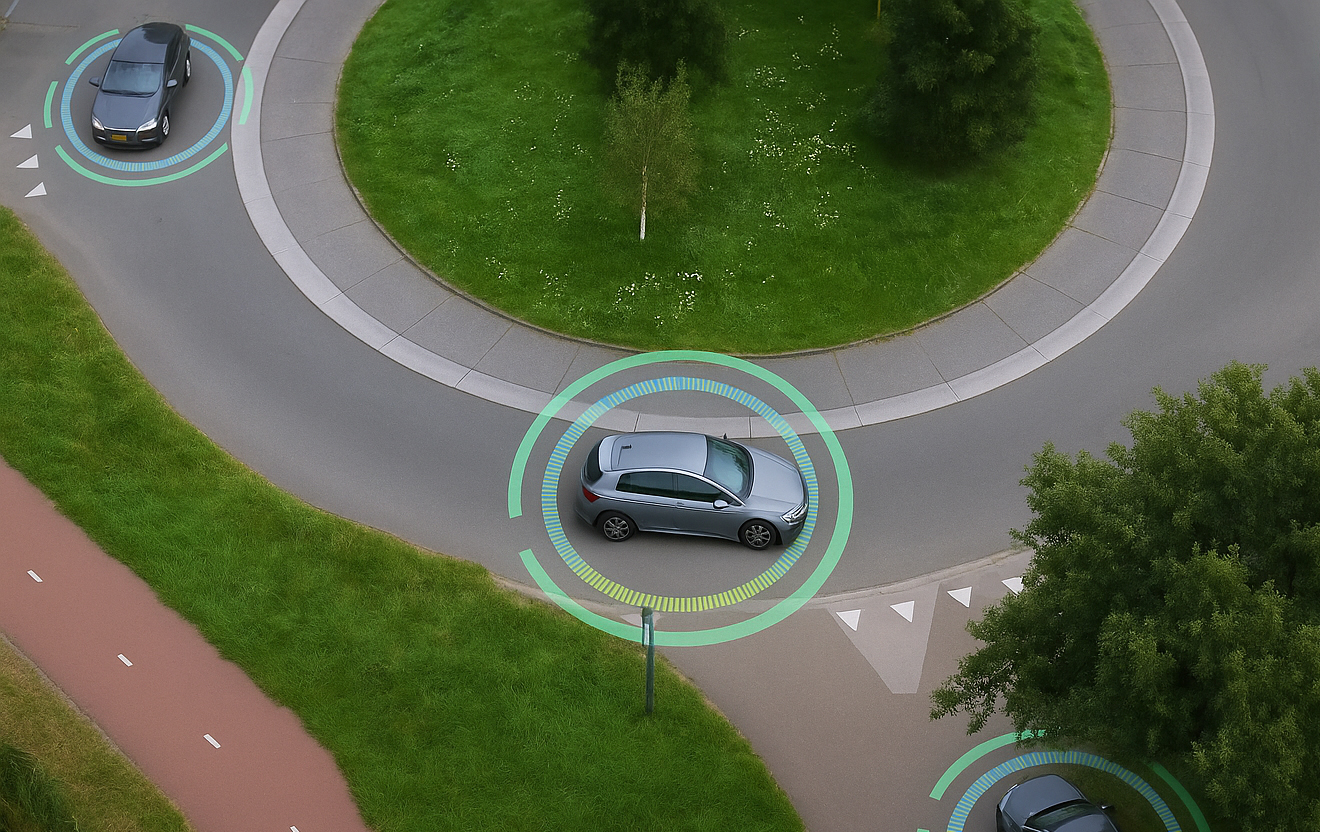Edge-AI combines the power of artificial intelligence with the advantages of edge computing: local data processing in, for example, sensors, cameras, and IoT devices. Sioux Technologies is a specialist in the development and application of Edge AI, as demonstrated through its involvement in the innovation project Digital Infrastructure for Future-Proof Mobility (DITM). Joost Sannen remarks, ‘Smart mobility and the self-driving car are going to change the world. We’re not there yet, but we are getting closer - faster than ever.’
The mobility system of tomorrow will be connected, highly integrated, and largely autonomous. Within DITM, 19 Dutch partners, including companies, knowledge institutions, and other stakeholders, are working to realise that future. This innovation project, funded by the Dutch National Growth Fund, focuses in particular on the design and implementation of the system architecture for a digital infrastructure supporting automated transport. All major components are considered, such as localisation, traffic services, navigation using digital maps, charging infrastructure, traffic management systems, and infrastructure for self-driving vehicles.
Autonomous manoeuvring
Sioux contributes to DITM on two fronts: advising on cybersecurity and developing the framework for embedded architecture in applying multi-sensor fusion for Cooperative, Connected, and Automated Mobility (CCAM). Joost Sannen, Senior Software Architect at Sioux, explains, ‘Through this project, we demonstrate how smart mobility can function, including a number of concrete use cases for autonomous capabilities. For example, we’re looking at buses automatically approaching stops, halting, allowing passengers to disembark, and setting off again. Other cases include autonomous manoeuvring of buses in depots, and traffic light optimisation, where vehicles and infrastructure collaborate to create green waves.’
Rapid acceleration
Modern vehicles bear little resemblance to those of the past. Whereas hardware used to determine functionality, performance, and safety, these aspects are now largely governed by digital systems. This transformation brings new opportunities. For instance, manufacturers can update software remotely, adjust functionalities, monitor a vehicle’s technical status, and carry out diagnostics. And this evolution is far from over. Vehicle software architecture is becoming rapidly more complex. This trend is accelerating further with the rise of autonomous driving.
Local execution
Self-driving vehicles take over tasks like visualisation, localisation, and navigation from the driver. This requires the use of AI: intelligent models that process and interpret vast amounts of data to make decisions. Moreover, these processes must occur at lightning speed, particularly from a safety perspective. This is where the benefits of Edge-AI come in. Running AI models locally in vehicles and infrastructure, rather than in the cloud, means data can be processed instantly, right where it is generated, such as in sensors, cameras, and IoT devices. The application of Edge-AI is therefore key to creating the mobility system of the future, and is integral to the DITM project.
Precise modelling
CCAM is a digital framework for intelligent self-driving cars that communicate with one another and with transport infrastructure. Multi-sensor fusion plays a vital role. It involves combining data from various sensors, such as LIDAR, radar, cameras, and GPS, in real time to build an accurate model of a vehicle’s surroundings. Within DITM, Sioux is responsible for researching the hardware architecture of the compute platform that runs the models used for perception functions. A key focus lies on both the data processing in the sensors and the central processing within the zonal network.
Efficiency and reliability
Sannen says, ‘We’re essentially making a proposal, offering a sort of outlook. The end product is a document that outlines the requirements for this development. It covers technical standards, sensor types and their applications, necessary combinations, required computing power and availability, as well as the criteria the physical data network must meet in order to optimise efficiency, reliability, and energy consumption. The next step is prototype implementation of multi-sensor fusion for localisation, laying the groundwork for further industrialisation.
Impressive performance
What challenges is Sioux taking on in the DITM project? Sannen begins with the pace of technological advancement: ‘Things are moving incredibly fast. What is state-of-the-art today could be outdated within six months.’ He also notes that, despite major investment from leading manufacturers, the self-driving car is still under development. ‘This is extremely complex technology. First and foremost, self-driving vehicles must be safe,’ Sannen emphasises. ‘But what exactly does that mean? Some manufacturers are already producing fantastic self-driving cars with impressive performance, but that doesn’t necessarily mean safety is always guaranteed.’
A better world for all
What is Sannen’s outlook on the future of smart mobility? ‘We’re not there yet. There are still significant technological hurdles to overcome, some of which are concerning. But we are drawing nearer, and faster. We’ve all heard of Tesla’s autopilot and the autonomous taxi trials. Mercedes, for example, is already quite advanced in its development of self-driving vehicles. That smart, automated transport system of the future is definitely on its way, and Edge-AI is the key to progressing from a proof of concept to a fully mature system. Once it arrives, the impact will be profound: more efficient, safer, and more sustainable mobility that will make everyone happier, including us at Sioux. We’re all working on meaningful, boundary-pushing technology that makes the world a better place, and we’re keen to invest in that, as we are doing through the DITM project. And in this case too, we shy away from no challenge.’
